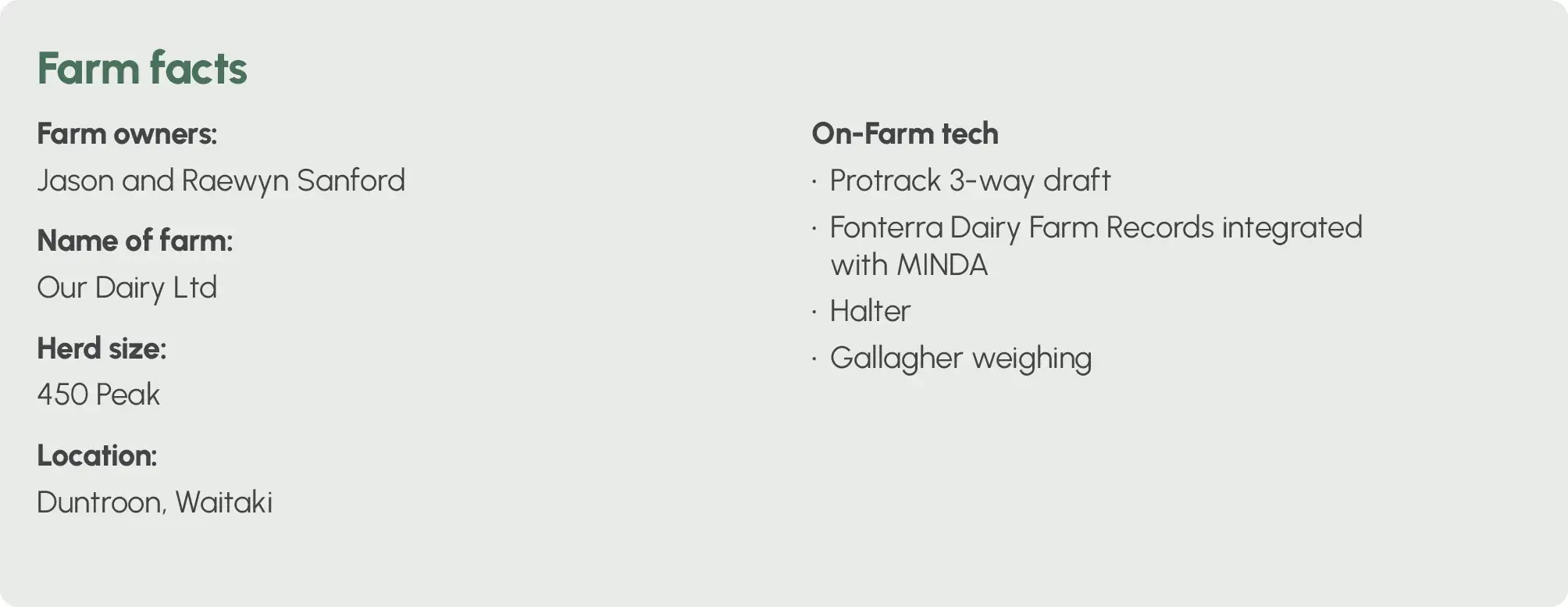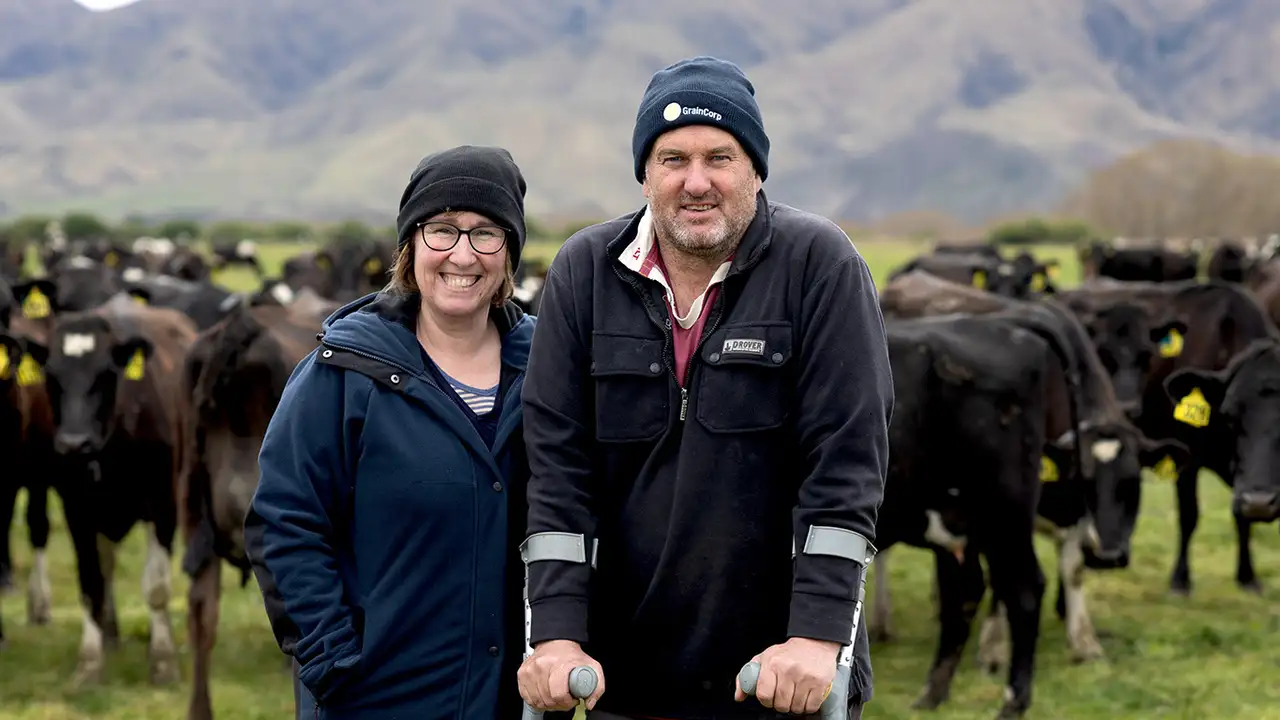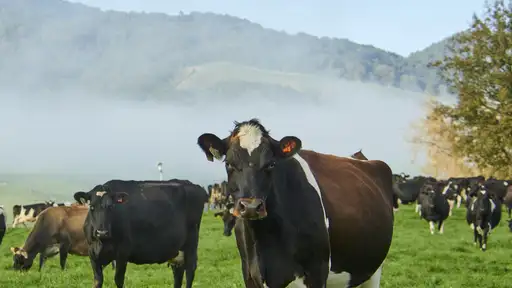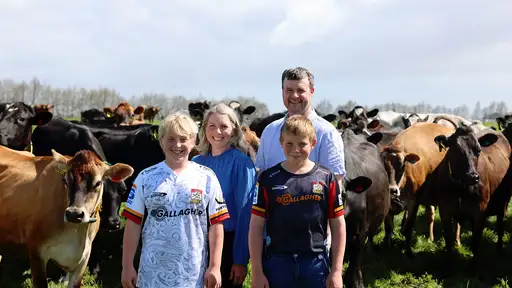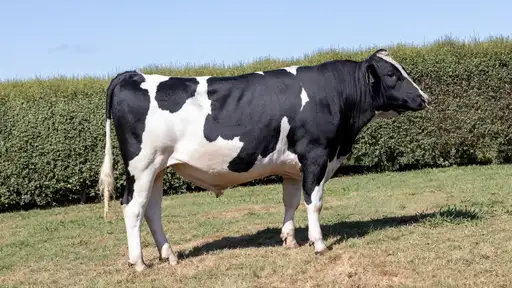Over the past decade, the Sanford’s have taken a rundown block and turned it into a thriving,
tech-savvy farm milking around 450 cross-bred cows across 124 hectares.
Jason and Raewyn purchased the original block in 2014 and completed the conversion by the 2016 season. “It was a rundown block with flat irrigation,” Jason recalls. “We were farming just down the road, and when that finished, we bought this block and converted it.”
Eight years on, the farm is a well-oiled machine. Operating as a System 3, they feed in the shed all season and have recently transitioned from palm kernel to barley blends. “We’re always looking to improve,” says Jason. “This year we’ve changed up the feed and brought in new tech to help us manage things better.”
From the beginning, the Sanford’s designed their shed to be efficient. “We put in Protrack drafting the first year here so it could be a one-man shed,” Jason explains. “Since then, we have welcomed more tech to aid our operations, save us time, labour and allow us to keep expanding our business.”
In the wearables department, they’ve had collars for about four years, and this year have decided to move to Halter. “Halter is helping us manage the herd, including grazing remotely because we’ve recently moved to our new run-off block.”
Jason explained that while they’re yet to reap the rewards of Halter’s heat detection and automatic drafting since integrating with MINDA and Protrack, he is very excited about the ease it will offer over the mating period.

The Sanford’s have embraced MINDA becoming the central hub for their farm data. “It’s all about integration,” says Jason. “We’ve got Halter, Gallagher weighing, Protrack, and Fonterra Dairy Diary all being feed data from MINDA. It means we’re not duplicating data, and everything’s in one place.”
One of their standout examples was their use of Gallagher weighing. “We installed a new cattle crush at the runoff last year and started weighing calves and yearlings properly,” Jason says. “Before, we never really weighed them. Now, I can see weights in MINDA and draft out lighter animals to get them up to speed before their first lactating season.”
This data-driven approach is already paying off. “Last year, we had about 20 animals that were too light. Now, we’re feeding them better and hitting target weights before mating. It means they enter the herd ready to perform.”
This current season their herd has hit their peak production two whole months sooner than the last season, “I believe that’s because our crop of heifers this year came into the herd at the right weights and have been able to hit the ground running” says Jason.
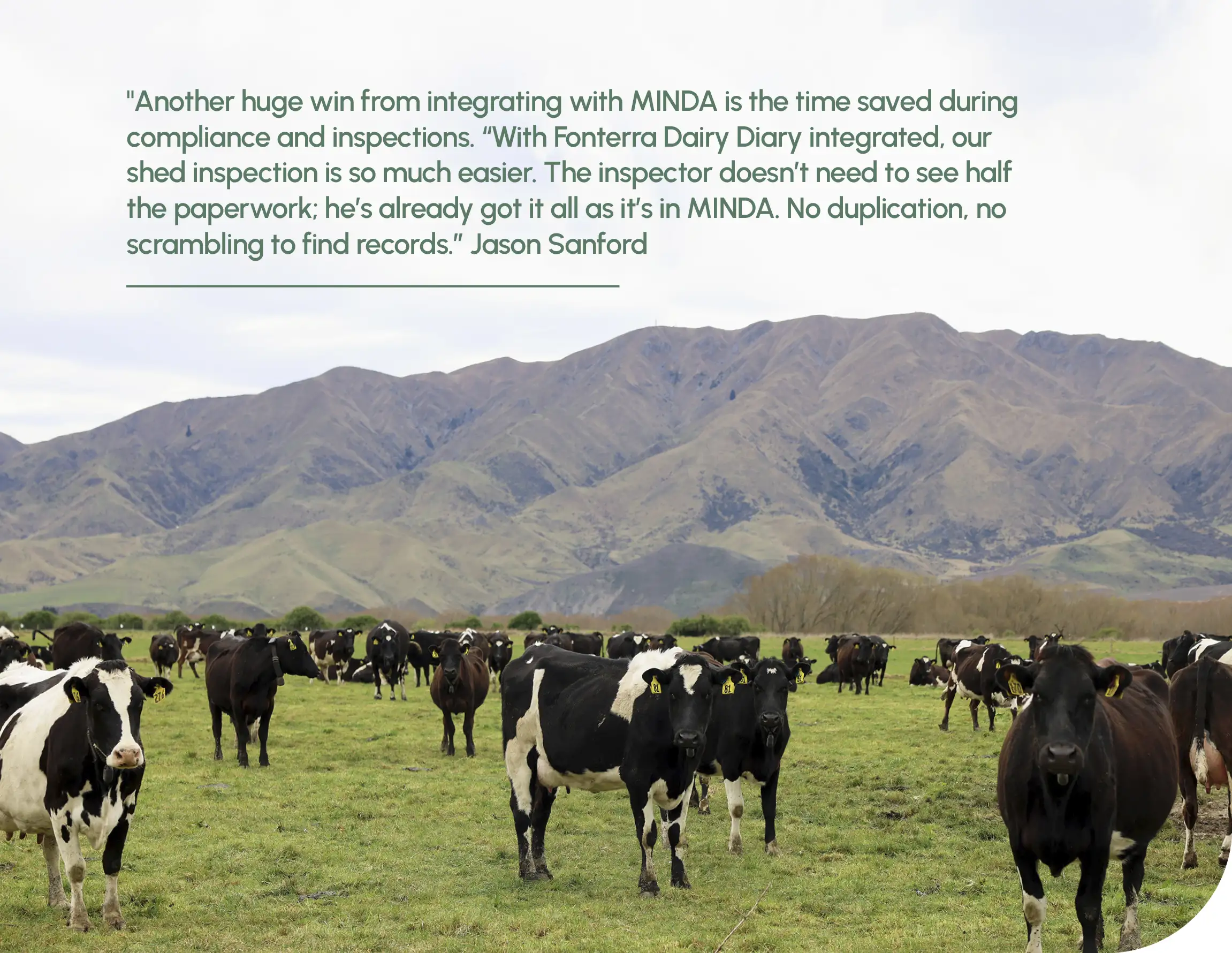
With Halter now in place, the Sanford’s are excited about future possibilities, but they say it’s already been life changing in the last five months. “Jason had surgery on his knee during the middle of calving this year,” says Raewyn. “That would’ve never been a possibility in the past, especially not over one of the busiest periods on farm.”
Jason and Raewyn have four children, the eldest Grace, 21, is studying early childhood education while working part-time; their second, Hayden, is finishing a diploma in Farm Management at Lincoln University and shows the most interest in one day returning to the farm.
“He’s the one who enjoys farm life,” says Jason. “He thinks the tech is great too. He’s seen firsthand how it makes farming more efficient.”
Their two youngest, Flynn (17) and Tahlia (15), are both still in school. While there’s no pressure on any of the kids to follow in their parents’ footsteps, both Jason and Raewyn are proud to be running a business that their children see as modern and forward-thinking.
By having the farm tech to support their operation, Jason and Raewyn have enabled themselves to push their herd performance to the next level.
LIC Agri Manager Malc Douglas says the Sanford’s six-week-in-calf rate last season was "fantastic” a reflection of both their strong management, attention to 'the basics' and their willingness to adopt and use technology to ensure the animals are in peak condition to perform to benchmark mating standards - aiding the success of a consolidated, future-focused mating plan.
“They have really embraced a more strategic approach to mating.
They’ve set themselves up well for continued herd improvement, and it’s really showing in their past results. This season, advising a few straws of sexed semen a day to advance genetic gain from their top cows, and using nominated beef sires for their bottom animals was a very easy conversation to have. They just get it.” Malc Douglas
The technology has been a critical enabler during the mating season. “We simply wouldn’t have been able to go 100% AB sires without the technology in place,” Jason says. “It’s allowed us to be far more efficient at what is typically one of the most intense and critical times of year.”

By adopting 100% artificial insemination across the herd, the Sanford’s create more high-quality heifer calves each year, ensuring they’re constantly maximising annual genetic gain, therefore lifting the standard of the animals they’re milking.
In addition, introducing three weeks of sexed semen this year will create a surplus number of replacements, creating selection pressure for their final choice of replacements and providing some very high BW, high value saleable heifers for added bonus cashflow.
“It means the cows we milk in the years to come are going to be even more efficient and more profitable. And as we look to grow our herd size in future, we know we’re doing it with better genetics behind us.” Jason Sanford
That genetic gain is already translating into performance in the vat. Last season, the Sanford herd averaged approximately 500kgMS per cow, and this year they’re already tracking ahead to hit 550kgMS.
The Sanford’s use of technology has not only streamlined daily operations and compliance but also enabled them to expand their business and make strategic decisions which have led to tangible gains in productivity, animal health, and genetic improvement. As Jason and Raewyn continue to innovate, their farm is an excellent example of how tech-forward thinking and integrated systems like MINDA can reignite the passion and redefine what’s possible.
